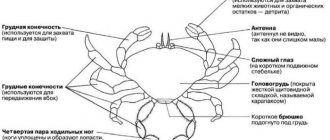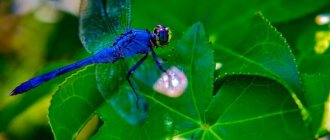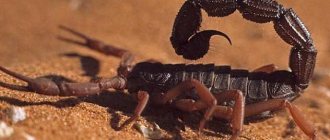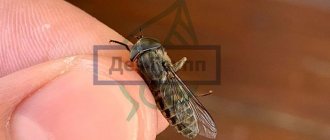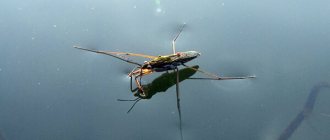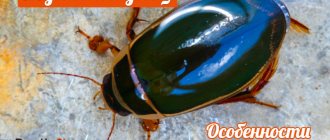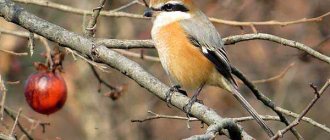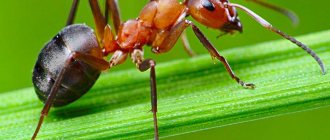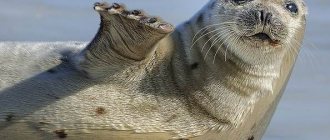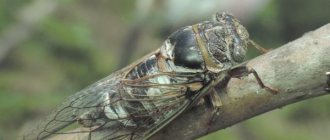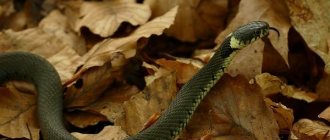- Wild animals
- >>
- Crustaceans
Kamchatka crab is also called King crab due to its impressive size. The benthic marine life is interesting as a biological species; it is also of interest from an economic point of view, since it is an object for commercial fishing. The habitat is wide. The Kamchatka crab is one of the few zoo representatives that has successfully undergone the process of artificial relocation.
Description
It is given third place in the world in terms of fishing. They are distinguished by their agility and strength when circumstances require it.
The Kamchatka crab is the largest representative of crustaceans; it is also called “king crab” due to its impressive size. The life of a marine inhabitant is interesting from the point of view of its biological ability to successfully undergo artificial relocation. It is of great economic importance from a fishing point of view. Hermit crabs, which are related to craboids, are considered direct relatives.
They are distinguished by their large sizes, up to 30 cm wide and up to 1.5 meters long.
What does it look like
The body structure was formed due to the characteristics of the environment in which the crab lives, nutrition and water temperature.
It consists of shortened five pairs of legs hidden under the shell, with the help of which it moves. With the help of a short pair of limbs it holds its shell. Having evolved, the Kamchatka crab lost its shell and therefore stopped holding it. Now, with the help of the fifth pair of legs, the crab cleans its gills. Four pairs of limbs move in turn; the Kamchatka crab moves very quickly, mainly to the side.
The abdomen is bent inward, shortened, its surface is strewn with small plates and microlegs. With the help of the front antennae and the sensitive cylinders located on them, the crab can touch and smell. Thanks to them, he identifies and finds food.
Sheds especially heavily in the first years of life, when the frame skeleton is replaced. Then this process occurs much less frequently. The average lifespan of a crab is about 15 – 20 years.
Body structure: cephalothorax, located under the shell, and abdomen under it. The eyes are protected by armored ridges. The carapace has many protective spines in the form of needles. The shell serves the crab as a support on which the muscles are attached and help it move. The lateral surfaces of the shell are equipped with gills. The chain of nerve nodes in the animal's body constitutes the nervous system. The head part consists of the stomach, and the back part contains the heart. The claws have their own special tasks. To cut the softest food or transport food to the mouth, the crab uses its left claw. To crush a sea urchin or shellfish, uses the right claw. Thus, the right claw is used in most cases for heavy work, because it is distinguished by its increased size and greatest strength.
Males reach a weight of about 7 kg, the body is from 15 to 25 cm wide. The female is up to 15 cm in size and weighs about 3 – 4 kg.
The shell has a red-brown color, the lateral surface is purple. Consists of gastric, cardiac and two gill zones.
Economic importance
Kamchatka crab is the most valuable commercial species - a source of delicious and dietary meat. The meat found in the legs, claws and at the junction of the legs with the carapace, as well as caviar, is eaten. The main method of preparation is boiling: crab limbs are placed in salted boiling water and cooked for 15-20 minutes. After cooking, the meat can be canned or frozen and stored. Since the beginning of the 21st century, fishing has also been carried out in the southern part of the Barents Sea, where it is allowed to catch only males whose carapace (cephalothorax) width exceeds 15 cm.
Where does it live?
Mostly distributed in the Pacific Ocean. It settles en masse in the areas of Kamchatka, the Okhotsk and Bering Seas. In America it is found near Bristol Bay and Norton Bay.
In Norway, authorities are drawing attention to the problems of a high population of king crab, which is displacing indigenous inhabitants. Crustaceans cause damage to local fauna.
The crab settles in salt water, where the percentage of its content is 32%, at temperatures ranging from +2 to +7 degrees. Migrating and molting, Kamchatka crabs are found in places where the waters warm up to + 15 - 18.
What does it eat?
The Kamchatka crab is an omnivore; it prefers to eat a variety of mollusks, plankton, worms, sea urchins, crustaceans, ascidians, small fish, and starfish. Young individuals eat algae and hydroid organisms, worms. The food goal forces animals to make mass movements. With the help of powerful claws, the crustacean kills its prey. In cases of lack of live food, it feeds on carcass remains from fish and various organisms. The animal has a unique feature of adapting to different foods. So, while waiting to molt, the crab looks for food containing a high level of calcium.
Its frame is highly durable and provides a high level of protection, but does not allow the body to grow between shell changes. Therefore, the crab can only grow in a short period of time, which lasts up to 72 hours. At this time, the animal sheds the old frame, and the new one is easily stretchable and does not prevent the crab from growing. After this, the chitin cover gradually strengthens and stiffens due to calcium salts. Then the growth of the Kamchatka crab stops.
Natural enemies of Kamchatka crabs
Photo: King Crab
Adult large representatives of the species have few natural enemies, since the crab has excellent protection - a reliable and durable shell, which in addition is covered with sharp spine-like needles. Only large marine mammals are able to overpower an adult crab.
Smaller individuals have a greater number of enemies, among them:
- predatory fish;
- Pacific cod;
- halibut;
- sea otter;
- bulls;
- octopuses;
- large crabs of different species (intraspecific cannibalism is noted).
During the molting period, the crab becomes absolutely vulnerable and is forced to seek shelter. Man is not one of the natural enemies of the species, however, given uncontrolled commercial fishing and poaching, man has every chance of becoming a species enemy. Therefore, quotas for catching royal arthropods are determined at the state level in order to use population reserves as carefully as possible without undermining their numbers and ability to recover.
Human activities indirectly negatively affect marine life, in particular the Kamchatka crab. Industrial chemical waste, plastic, and petroleum products pollute the vast seas and oceans, negatively affecting all flora and fauna. As a result, entire species are vulnerable to depletion or are on the verge of extinction.
Reproduction
Crabs are characterized by large migration. The chosen route for the premises remains the same from year to year. They migrate due to seasonal changes in water temperature, as well as in search of food and for reproduction. In winter, the crab sinks to the bottom, to a depth of up to 300 m. In spring, it comes to shallow water, where it is warm and there is a lot of food.
The male reaches sexual maturity at the age of 10 years, and the female is considered sexually mature at the age of eight.
It has been established that a female can lay about 300,000 eggs at a time! During the year, females store eggs on their abdominal legs. Temperature fluctuations in water determine the movements of animals. When king crabs move to the shore, the eggs of the females have already passed into the stage of formed larvae. On the shallow water shore, the larvae hatch and can already swim independently. At this time, their mothers continue to move. Very young individuals die before reaching adulthood, because They are the favorite prey of marine life.
Development
The larva of the Kamchatka crab is the size of a fly, it has a long abdomen, an oblong smooth shell with three spines along the edges. There are no legs. Swims with the help of its jaws, its long abdomen plays the role of a rudder. The first two months the larva lives in the water column, then it molts and settles to the bottom, where it lives in thickets of ahnfeltia algae. Mortality from birth to settling to the bottom reaches 96.5%. After birth, crab juveniles go through several stages of development. After three years, the crab larva leaves the shelter (during this time it molts several times) and moves to areas with sandy soil. At the age of 5-7 years, the width of the shell reaches 43-69 mm.
Peculiarities
In summer, crabs flock en masse to shallow water, and in winter they move deeper into the ocean. They can dive to a depth of 300 m. Thanks to this feature, Kamchatka crabs lead an active life and do not hibernate.
They can move at an average speed of up to 5 km per day. During mass movement along the bottom, the speed remains at the same level.
Kamchatka crab is a slow-growing animal; the key growth factor is water temperature. Thus, in America, crabs living in warm water grow much faster than in Russia, living in the cold waters of Kamchatka.
Lifespan
Kamchatka crabs can live for 20 years. However, in reality, few arthropods manage to live to such a respectable age. Regular catching of decapod crayfish on an industrial scale does its job, so meeting an “old living giant” these days is very problematic.
However, you should not despair if you never manage to taste the huge king crab. The meat of old craboids has very mediocre qualities. Individuals under 15 years of age are much tastier and healthier.
Eating
Crab claws are an expensive, world-valued and gourmet delicacy. The contents of the right claw have a more tender and nutritious meat composition and are of the greatest value. Kamchatka crab meat contains many essential vitamins, amino acids and minerals such as zinc and iodine. Meat is especially rich in protein and is irreplaceable for the human body. The shell and internal organs are processed as useful fertilizers.
Crab meat is rich in taurine, tocopherol, ascorbic acid, polysaturated fatty acids, and calcium.
Benefits of eating crab meat:
- Strengthening the heart muscle.
- Reducing cholesterol levels, protecting against heart and vascular pathologies.
- Prevention of heart attack and stroke.
- Normalization of hormonal levels.
- Improving the functioning of the thyroid gland.
- Improves vision and functioning of the digestive system.
- Increased metabolism, normalizes the absorption of nutrients.
- Helps with psycho-emotional stress, protects the nervous system from anxiety and depression, improves well-being and mood.
- Has a beneficial effect on skin condition.
- Considered a powerful aphrodosiac, it stimulates libido in both men and women.
Contraindications and harm
Due to high demand, multiple cases of poaching have been provoked. Due to illegal fishing of crustaceans, the market is teeming with low-quality products. A person can easily become poisoned by low-quality meat containing microbes, pathogenic organisms and various infections. Such a crab may end up on your table if it does not have a quality seal check. A spoiled product can cause severe toxic poisoning, damage hearing and vision, and cause severe disturbances in the functioning of the nervous system.
In order to prevent this, it is very important to treat the place of purchase and not look for a cheap product. To avoid buying contaminated crab, you must purchase meat from stores that have the necessary documentation. When cutting seafood, you should pay attention to the condition of cartilage, spines, and small dense elements. You must be careful not to put the sharp part into your mouth, which can damage the esophagus and gastrointestinal tract.
Interesting Facts
- A distinctive feature of Kamchatka crab is its caviar, light purple in color, reminiscent of grapes.
- In the USSR, a biological campaign was carried out to relocate the Kamchatka crab to the Barents Sea.
- Kamchatka crab is exported to eastern countries, as well as major Russian cities and local markets.
- They are long-lived, as they live up to 20 years. At the same time, the population is quite high, despite the high level of crab catch by fishing vessels.
- Crabs are highly fertile, which stimulates the fishery and allows it to grow from year to year, without loss of population.
- Crab shells can be processed and turned into flour, which is used in the food industry.
- The male can shed his shell in a matter of minutes; this takes him about 10–12 minutes. At such moments, he is especially vulnerable, and can become a tasty morsel for marine life.
- In a female, the change of shell can last about a week. If she has a patron who supports the female with his claws and protects her, then he will soon take the place of the spouse.
- The size of the head is very small in comparison with the rest of the body, and the stomach is located in the head.
Nutrition
Crabs are predators, but they can also eat algae. Everything that can be found at the bottom is suitable for food - from plankton and worms to starfish. They do not disdain carrion. Before molting, if there is a choice, they prefer echinoderms: they are rich in calcium. Crabs feed sloppily, they do not completely eat their prey, and small marine scavengers coexist well with them.
In the Barents Sea, the crab population competes for food with commercial fish - cod, flounder, haddock. This upsets the ecological balance in the region.
